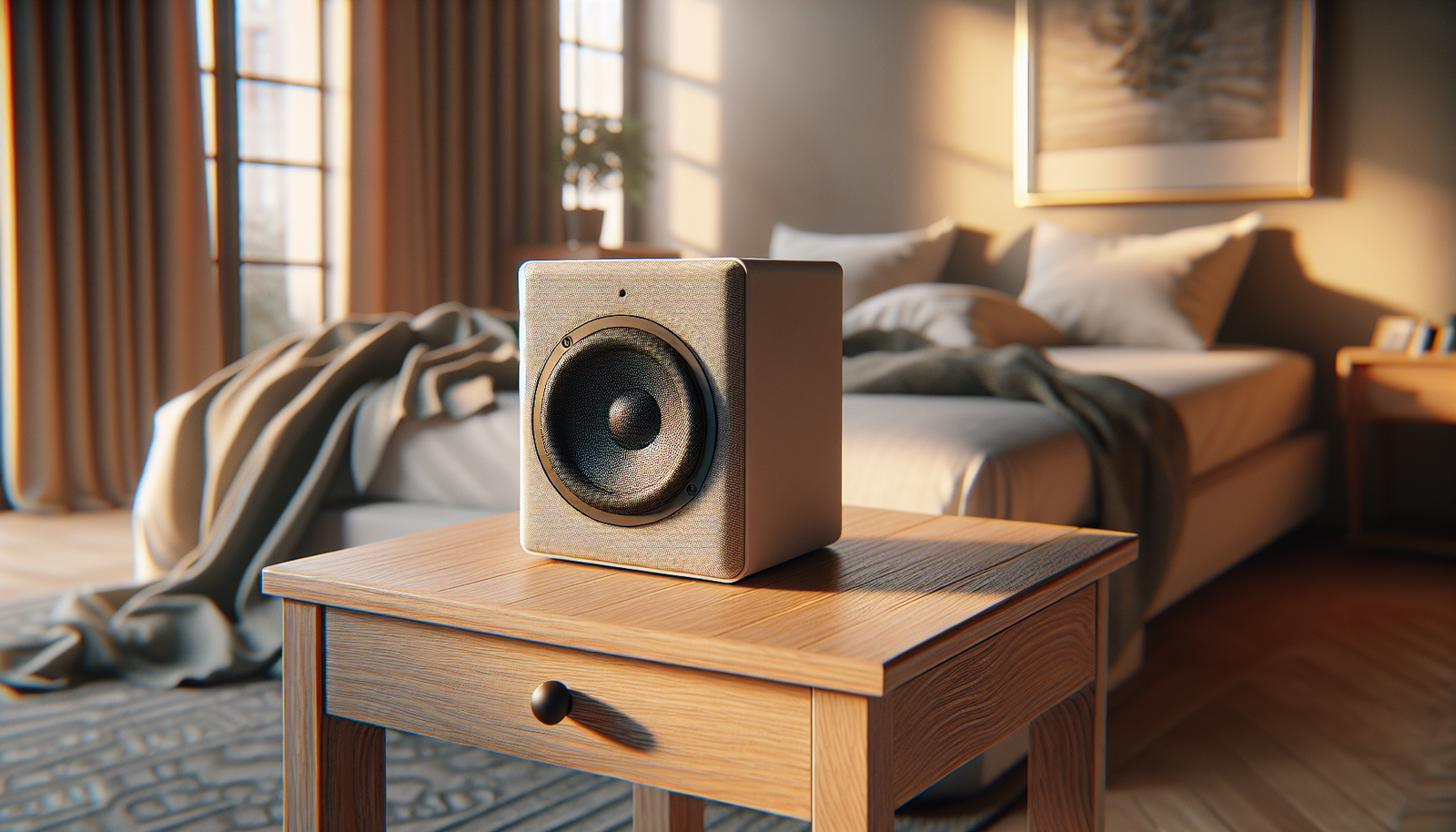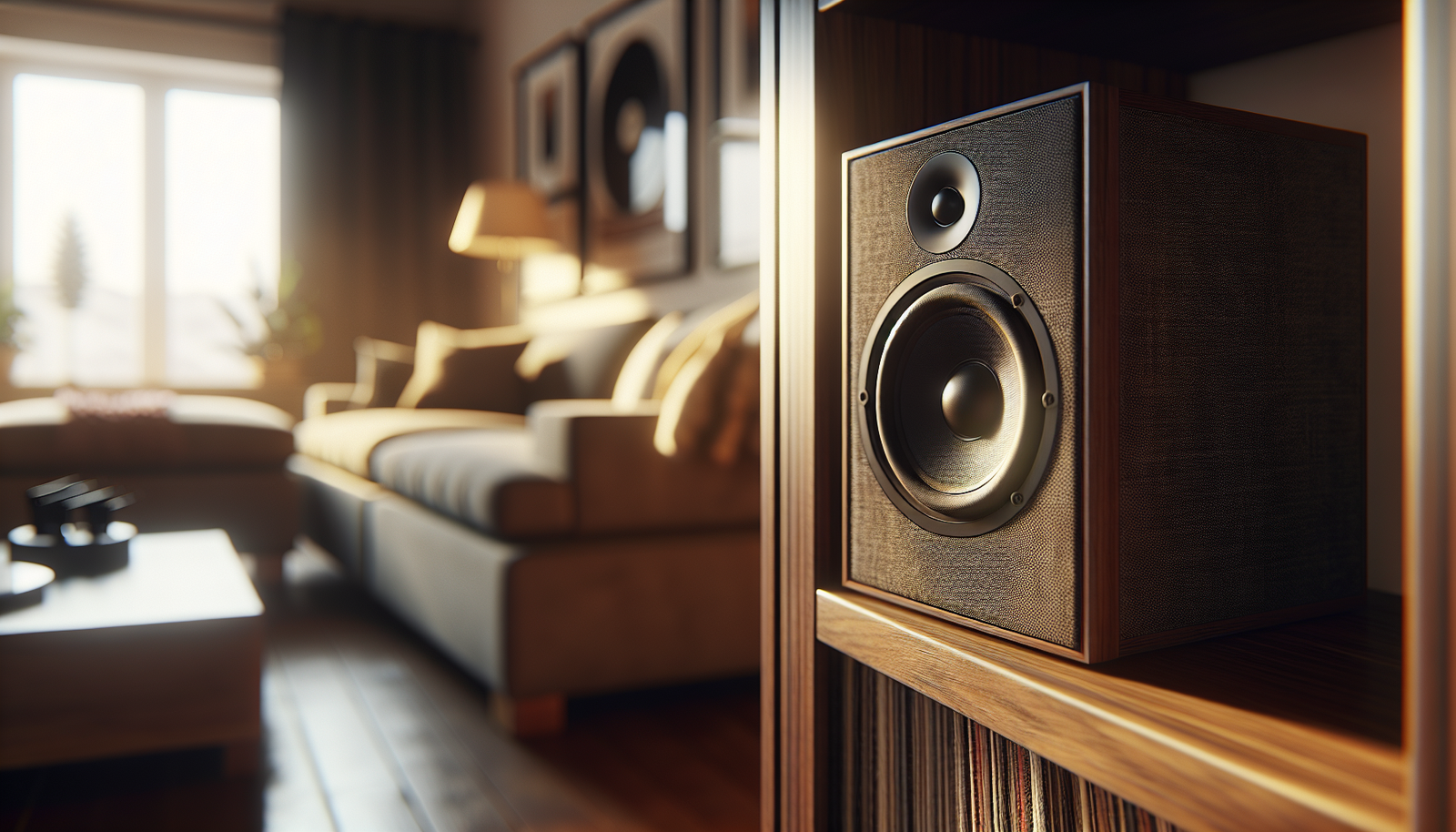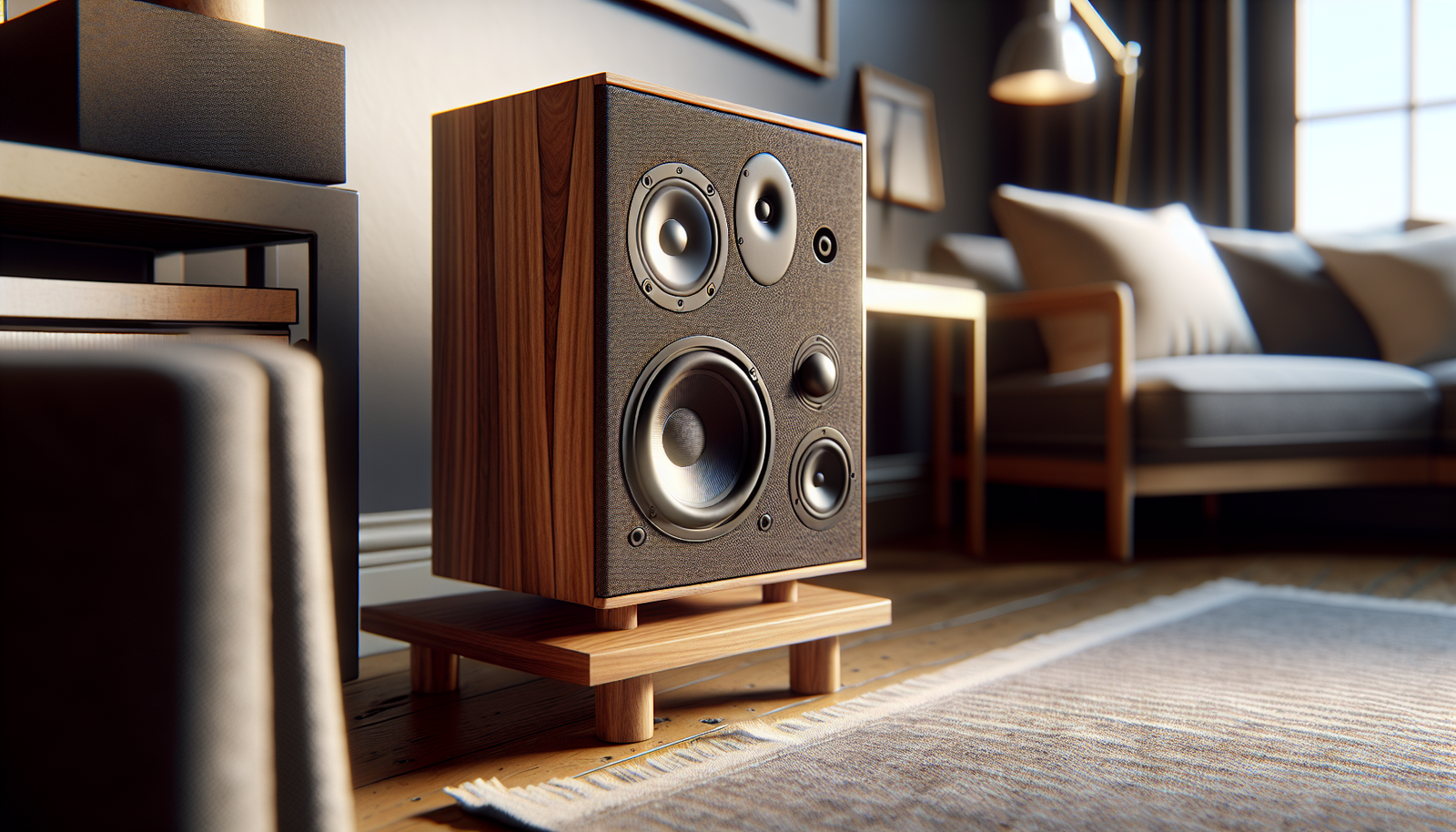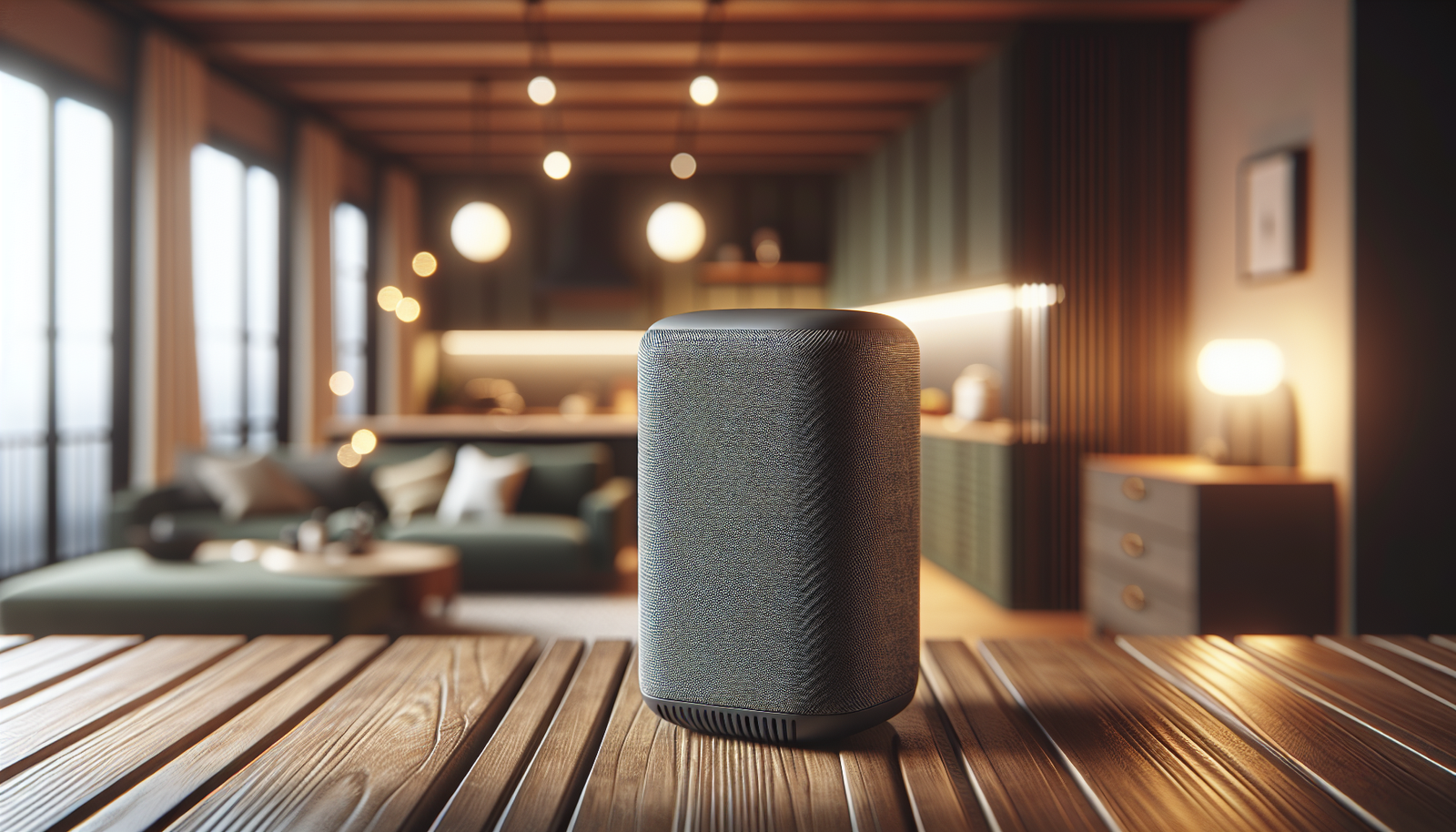Want to build a bedroom sound system that feels tailored to your space, your music, and your sleep routine?
Creating the Perfect Bedroom Sound System
Designing a bedroom sound system is different from designing a living-room setup. You have to balance space, neighbors, comfort, and audio quality so your system is both satisfying and considerate.
Why bedroom audio needs its own approach
Your bedroom is a multipurpose room: asleep, working, relaxing, or gaming. That means your sound system needs to be flexible, compact, and tuned to near-field listening while minimizing bass bleed and late-night disturbance.
Define your listening goals
Start by asking what you primarily want from your bedroom audio. Are you mostly listening to music, watching movies, gaming, sleeping to ambient tracks, or using voice assistants?
Defining goals early will guide every choice from speakers to subwoofers, amplifier power, and acoustic treatment.
Assess your room
Measure the room dimensions and note the placement of windows, closets, and the bed. Oddly shaped rooms and reflective surfaces will affect bass and high-frequency clarity.
Record where you’ll typically listen—on the bed, at a desk, or from a chair—as that listening position will determine speaker placement and calibration.
Understand room acoustics basics
Sound reflects off walls, floors, and ceilings. Without control, reflections cause muddiness in bass and smearing in mid-highs.
Acoustic treatment—bass traps, absorbers, and diffusers—can clean up the sound by reducing reflections and standing waves. In bedrooms, focus on first-reflection points and corners for bass control.
First-reflection points and where to treat
First reflections arrive shortly after the direct sound and blur imaging. Use a mirror from your listening position: where you can see a speaker in the mirror on a wall, that’s a reflection point to treat.
Treat those points with absorptive panels or thick curtains; for corners use bass traps to tame low-frequency buildup.
Bass management in small spaces
Small rooms often have boomy bass due to standing waves. Moving the speaker or your listening position can reduce nulls and peaks.
Consider a compact subwoofer with phase and crossover controls so you can fine-tune bass response without overwhelming the room.
Speaker types and which fits your bedroom
Choosing the right speaker form factor is central to fitting sound into your bedroom.
- Bookshelf speakers: Compact, generally offer balanced sound and fit on stands or shelves.
- Powered monitors: Include built-in amps—ideal if you want less gear and clean sound.
- Soundbars: Good for movie watching and minimal setups, but limited stereo imaging.
- Floorstanding speakers: Great sonically but often too large for cozy bedrooms.
- Smart speakers: Convenient streaming and voice control, best for casual listening and background audio.
Bookshelf vs powered monitors
Bookshelf speakers require an external amp or receiver but give you upgrade flexibility. Powered monitors include a built-in amp and often deliver punchy, neutral sound for nearfield listening.
Stereo vs multichannel in a bedroom
Stereo (two channels) gives excellent music performance and precise imaging for nearfield listening. Multichannel (5.1, 7.1) is better for immersive movies but needs more space and careful placement to avoid overwhelming the room.
For a bedroom, a stereo setup with a small subwoofer is often the sweet spot, unless you watch a lot of movies and can dedicate space to rear channels.
Amplification and source components
Match speaker sensitivity and impedance to your amplifier power to avoid distortion or underpowering. Small speakers don’t need huge wattage—clean, controlled power is more important than raw output.
If you choose active speakers, the amplification is built in, simplifying cabling and setup. If you prefer separates, a compact integrated amp or AV receiver will be the core of your system.
Integrated amps vs AV receivers
An integrated amp focuses on stereo listening and usually has fewer processing features but better sound quality per dollar. An AV receiver supports multichannel, HDMI switching, and some room correction—useful if you want a combined TV and audio hub.
Digital-to-analog conversion (DAC)
A good DAC converts digital audio to analog with minimal noise and jitter. Built-in DACs in phones or TVs are okay for casual listening, but a dedicated DAC can noticeably improve clarity and detail.
If you stream high-resolution audio or use a computer as a source, invest in a quality external DAC.
Wired vs wireless connectivity
Wired connections (optical, coaxial, USB, analog RCA) provide reliable, low-latency audio with minimal interference. Wireless options (Bluetooth, AirPlay, Chromecast) offer convenience, especially for phones and tablets, but may compromise audio quality or introduce latency for gaming.
Use wired connections for primary listening sources; keep wireless for casual or background playback.
Bluetooth, AirPlay, and Chromecast basics
Bluetooth is nearly universal, simple, and compact, though codec limitations (SBC, AAC, aptX, LDAC) affect quality. AirPlay and Chromecast over Wi‑Fi generally stream higher-quality audio and support multiroom setups.
Choose the protocol that matches your ecosystem—Apple devices pair well with AirPlay, Android devices with Chromecast or Bluetooth.
Subwoofer planning and integration
A subwoofer adds impact and depth you can feel, but it must be integrated carefully in a small space. Use adjustable crossover frequency, phase, and level to blend the sub with your main speakers.
Place the subwoofer near a corner or along a wall for reinforcement, then fine-tune position and settings by ear or with measurement tools.
How to set subwoofer crossover and phase
Start with a crossover around 80–120 Hz depending on your main speakers’ low-end ability. Adjust phase to minimize cancellations—if bass sounds thin at your seat, try flipping the phase or shifting the sub slightly.
Use room measurement apps or a sweep tone to check for peaks and dips, then tweak the crossover to smooth response.
Placement and positioning for best sound
Speaker height, toe-in, and distance from walls greatly affect imaging and tonal balance. Aim the tweeters at ear level when seated, and set speakers roughly an equal distance from your listening position to form an equilateral triangle.
Avoid pushing speakers flush against walls; pulling them even a few inches out improves clarity. For beds as the main listening spot, consider slightly angling speakers to account for a lying or semi-reclined position.
Typical placement guidelines
- Listening distance: 1–3 meters for most bedroom setups.
- Speaker distance from wall: 20–60 cm or more, depending on bass response.
- Toe-in: Slightly toward the listening position for focused imaging.
Acoustic isolation and stands
Speakers on lightweight furniture or directly on floors can transmit vibrations and blur bass. Use isolation pads, speaker stands, or wall mounts to decouple speakers from surfaces.
Stands also help place bookshelf speakers at the proper height for better soundstage and clarity.
Cables, connectors, and signal chain
Use good-quality cables for power, speaker connections, and digital interconnects, but avoid spending excessively on audiophile cables. Ensure secure connections: banana plugs, spade lugs, or quality bare-wire terminations provide reliable contact.
Label cables where helpful and keep the signal chain short and tidy to avoid interference.
Room-friendly volume strategies
Bedrooms often require lower volume listening without losing detail. Invest in speakers that perform well at low levels, and consider a headphone-friendly setup for late-night duty.
Headphones or a headphone amp with a good DAC provide private listening without disturbing others.
Headphones vs speakers in the bedroom
Headphones offer isolation, great detail, and late-night convenience; room speakers provide a shared, natural listening experience. If space or noise is a constraint, plan for a high-quality pair of closed-back headphones and a small headphone amp.
You can combine both: speakers for daytime and headphones for late nights.
Smart features and control
Smart speakers and networked audio devices let you stream or control audio via voice or apps. If you use voice assistants, choose devices that respect privacy and allow you to disable microphones when desired.
Set up sleep timers, automation scenes, and volume limits to align audio with your daily routine.
Multiroom and streaming options
If you want consistent sound across your home, choose a streaming protocol that supports multiroom audio. AirPlay 2, Chromecast, and specific proprietary systems (Sonos, Bluesound) handle synchronized playback across rooms.
Consider whether you want an expandable system now; pick devices that can integrate with future additions.
Calibration and room correction
Manual listening and software room correction both help you reach balanced sound. Room correction systems like Audyssey, Dirac, or room EQ in standalone devices can compensate for some room effects, but treatment and placement are still important.
Use a combination: acoustic treatment for fundamental issues, correction for fine-tuning.
EQ tips without ruining tone
Apply gentle EQ boosts and cuts; large adjustments can alter the character of music unnaturally. Use parametric EQ to target narrow problem frequencies rather than broad-stroke changes.
If you’re unsure, use a flat baseline and only tweak what you clearly hear as off.
Power considerations and noise
Check electrical supply and avoid overloading outlets with multiple high-draw devices. Use a quality power strip with surge protection; for noise-sensitive systems, consider a linear power supply or filtered power conditioner.
Keep power cables separated from signal cables to reduce hum and interference.
Sleep and noise-sensitive features
If you use audio to fall asleep, consider automatic fade-outs, white-noise generation, or playlists designed to reduce waking. Use volume limiting or system-level caps to prevent accidental loud playback.
Adaptive volume leveling features in some streaming apps help maintain consistent loudness between tracks and sources.
Budget builds and example setups
Your budget guides many choices. Below is a simple table summarizing recommended setups by budget and use case.
| Budget range | Best for | Suggested core components |
|---|---|---|
| Under $300 | Casual music and background audio | Smart speaker or compact Bluetooth speaker + phone streaming |
| $300–$800 | Serious music listening, small room | Powered bookshelf monitors or compact integrated amp + passive bookshelf speakers + subwoofer (optional) |
| $800–$1,500 | Movie watching and higher-fidelity music | Integrated amp or AV receiver + bookshelf or small floorstanders + subwoofer + DAC |
| $1,500–$3,000 | High-fidelity stereo | Quality separates (integrated amp or pre/amp + power amp), bookshelf or floorstanding speakers, subwoofer, room treatment |
| $3,000+ | Audiophile / dedicated listening | High-end speakers, room correction, dedicated DAC, balanced cabling, professional setup |
Example gear lists
Below is a compact table of components and what role they play.
| Component | Role |
|---|---|
| Speakers (bookshelf/floorstanding) | Primary sound reproduction |
| Powered monitors | Integrated amp + speaker in one box |
| Subwoofer | Low-frequency reinforcement |
| Integrated amp / AV receiver | Amplification and switching |
| DAC | Improves digital audio conversion |
| Acoustic panels / bass traps | Control reflections and standing waves |
| Speaker stands / isolation pads | Optimal placement and vibrational isolation |
| Cables (speaker, RCA, digital) | Connect components |
| Headphones + amp | Private listening option |
Specific recommendations by use-case
- Music lover focused on detail: Stereo bookshelf monitors or passive bookshelves with quality integrated amp, dedicated DAC, and room treatment near the listening position.
- Casual streamer and TV watcher: Soundbar with subwoofer or compact AVR with small speakers; prioritize HDMI ARC/eARC for TV integration.
- Gamer: Low-latency wired connections, good stereo imaging or a proper surround setup if space permits; consider a DAC/amp for headset use.
- Sleeper who needs ambient sound: Use a small speaker with fade-out timers or a smart speaker with sleep routines and privacy controls.
Troubleshooting common issues
If your sound is boomy: try moving speakers or subwoofer, add bass traps, or adjust crossover and phase. If imaging is muddy: check speaker toe-in, tweeter height, and first-reflection treatment.
If there’s hum or interference: separate power and signal cables, ensure proper grounding, and check for loose connections.
Maintenance and long-term upgrades
Keep speakers dust-free and periodically check connections for corrosion or looseness. Over time, listen for driver degradation, and plan upgrades in stages—start with speakers, then amplification, then room treatment, and finally source/DAC improvements.
Replacing one component at a time helps you identify meaningful improvements and manage cost.
Checklist for final setup
- Have you defined your listening goals?
- Did you measure the room and mark the listening position?
- Are speakers placed at ear height and correctly angled?
- Is there basic acoustic treatment at first-reflection points and corners?
- Have you set subwoofer crossover, level, and phase?
- Are cables tidy and power protected?
- Did you calibrate or run room correction if available?
- Do you have a headphone option for late-night listening?
Running through this checklist will keep you organized and get you to satisfying results faster.
Final thoughts and next steps
You don’t need to spend a fortune to build a bedroom system that sounds great and fits your lifestyle. Prioritize speakers and room setup, aim for flexibility, and gradually upgrade components as your preferences become clearer.
If you want, list your room size, budget, primary uses, and any existing gear you already have, and you’ll get tailored recommendations for a specific setup that fits your bedroom and listening style.



